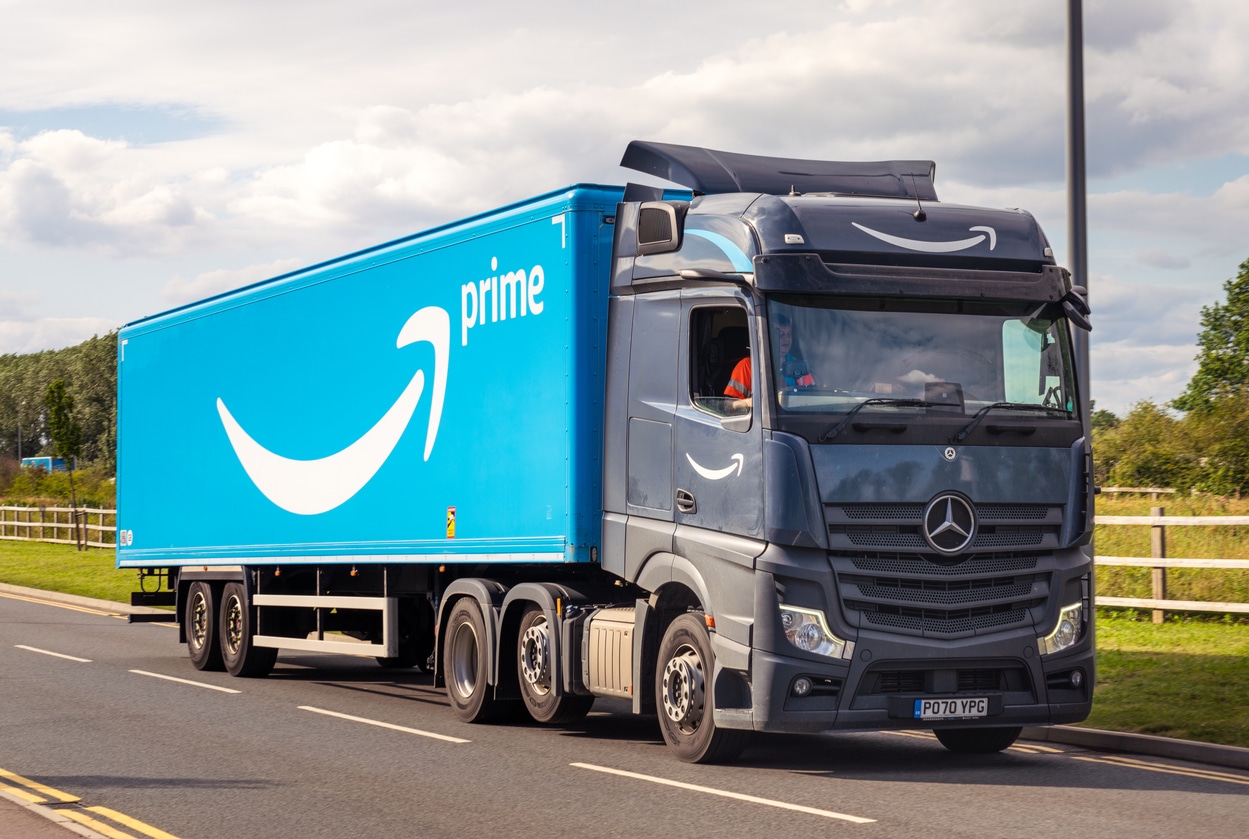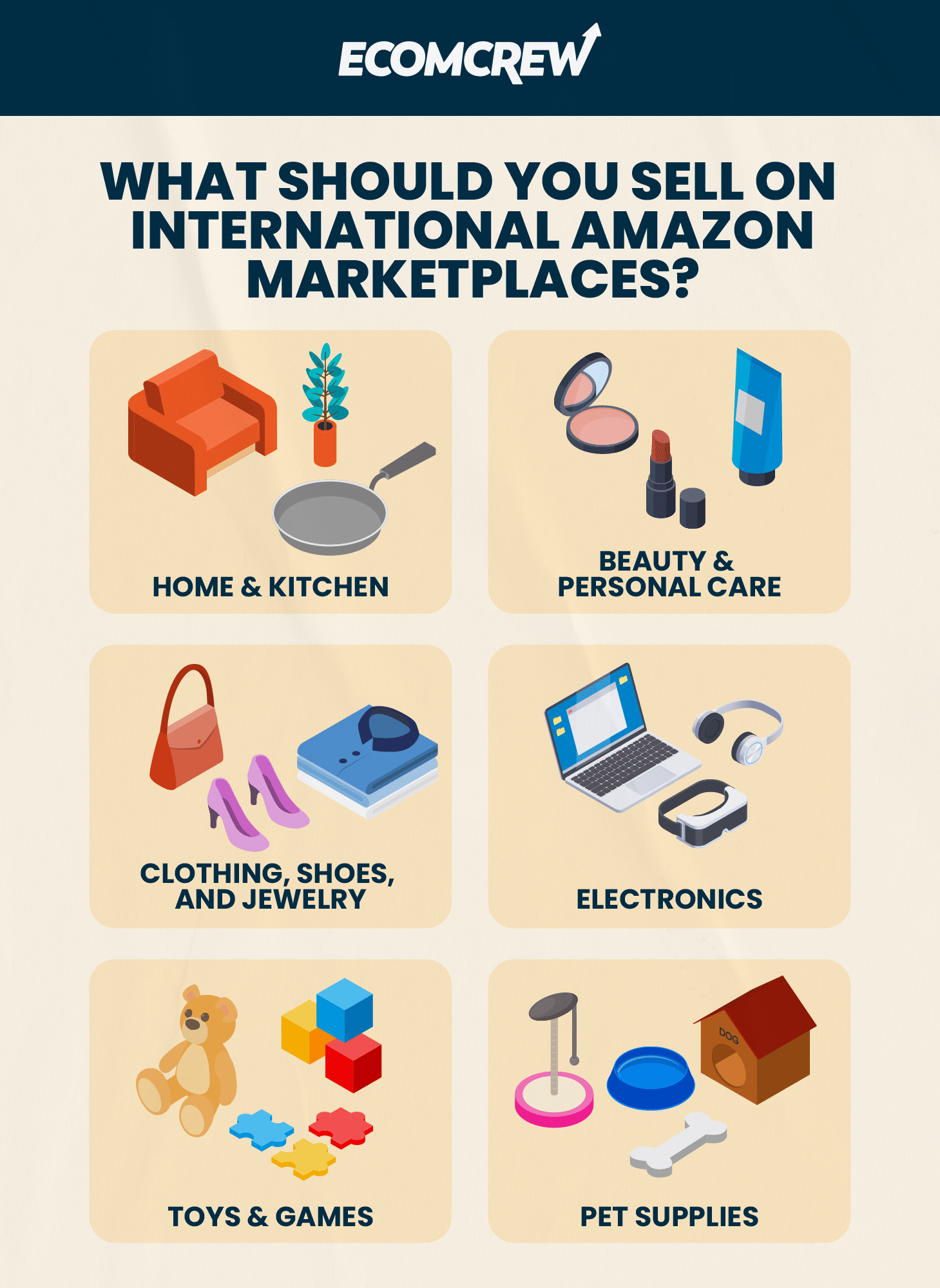How to Sell on Amazon’s International Marketplaces

Expanding your ecommerce business to international markets can be a game-changer, and Amazon has the tools to make it happen. Selling your products or services globally through Amazon not only broadens your customer base but also offers the potential for significant revenue growth.
Whether you have years of experience selling on Amazon or just starting out, this guide will teach you how to sell on Amazon's international marketplace.
List of Amazon's International Marketplaces
Amazon has a straightforward process and has a certain number of marketplaces that helps you sell in more than 175 fulfillment centers to over 100 countries and regions worldwide. And with at least 21.4% of total retail sales happening online by 2024, having your brand be exposed to a global market now rather than later can help you get a head start on your competition.
Here’s a list of Amazon marketplaces listed by region:
Americas:
- United States – Amazon.com
- Canada – Amazon.ca
- Mexico – Amazon.com.mx
- Brazil – Amazon.com.br
Europe:
- United Kingdom – Amazon.co.uk
- Germany – Amazon.de
- Spain – Amazon.es
- France – Amazon.fr
- Italy – Amazon.it
- Netherlands – Amazon.nl
- Poland – Amazon.pl
- Sweden – Amazon.se
- Turkey – Amazon.com.tr
Asia-Pacific:
- Japan – Amazon.co.jp
- Singapore – Amazon.sg
- Australia – Amazon.com.au
- India – Amazon.in
Middle East:
How to Be an Amazon International Seller
The requirements for becoming an Amazon seller vary across different countries.
Fortunately, Amazon created a global selling guide that is simple and comprehensive. Here are the four common steps:
#1Decide where and what to sell
Before anything else, keep in mind that each marketplace has different customer needs and preferences. It’s important to first research and understand which of your products will resonate well with your potential customers to meet their needs. We made a list of products that will likely be successful on international platforms in a later section.
Make sure that the product is accepted in that country and learn what requirements must be met in terms of laws and regulations. Also, be aware of local fees when deciding to sell in Amazon’s marketplaces (especially in Europe and Japan).
Fees to consider when selling on Amazon Europe
A common fee most American sellers ask when selling in Europe is the value added tax (VAT).
Compared to the US sales tax, the VAT is a tax added to the goods before a customer’s purchase and ranges from 7% to 27% depending on the marketplace. Furthermore, if you choose to sell in Germany only, you will be required to pay an €0.35 ($.38) outbound fee on every unit outbound from DE.
Since you’re operating in a different country, different customs laws will apply. To be safe, it’s preferred that you hire a local logistics provider in the country you want to sell. One error in your shipping documentation can lead to returns or an abandoned product.
When it comes to labeling your products to be shipped, avoid using Amazon as the importer of record, even if it's under FBA inventory.
Fees to consider when selling on Amazon Japan
One of the first things you need to know when selling in Amazon Japan is that you’ll need to make another Amazon account and the professional selling plan is available for 4,900 JPY a month, or roughly $33. Sellers are still charged a referral fee for every product sold on Amazon Japan, roughly 8% to 15% depending on the product while Amazon device accessories are charged 45%.
Other costs you might incur is a small high-volume listing fee where Amazon will charge a monthly fee of 0.05 yen whenever a non-media listing has not been sold in 12 months.
In processing refunds where you’ve already received payment, Amazon will refund the referral fee for the item which is the smaller value of either 500 yen or 10% of the referral fee.
In the end, it’s probably best to consult with your tax advisors before making any decisions on how you will sell your products in other countries.
#2Register and list your products
For this step, you’ll have to create a seller account in each marketplace where you plan to operate. If you plan on selling in unified markets like Amazon North America or Amazon Europe, you’ll only have to register once for each region to gain access to the stores with each of their respective networks. This means if you’ve made a seller account in Spain, you can also access stores in France, Germany, and Italy since it’s part of Amazon’s European tree.
When you’re pondering which products to sell, be sure to check local guidelines of each Amazon marketplace before selling. Certain products will require documents for approval and the requirements change frequently.
The sign up process is pretty much the same as how you would normally sign up across different countries. You’ll need to enter basic details such as:
- Name
- Address
- Phone number
- Email ID
- Bank account number
- Business name
- Tax information
- Valid credit card number and its details for the payment
Now it’s time to list your products. While signing up on unified marketplaces automatically links your account across different countries, it’s a totally different story when it comes to listing your products.
Some countries have different product listing requirements, so be sure you list them separately on each marketplace. For example, if you create a listing on Amazon US, it doesn’t automatically show on Amazon Canada or Amazon Mexico even though they are in a unified market.
Once you’re done listing your products, you can now track and manage your business across multiple regions in one place. You can use Amazon tools such as the Build International Listings (BIL) to monitor your seller accounts globally and manage your listings across the market. It will also translate your product to the local language provided that the product is already available in that marketplace.
#3Ship and fulfill

Order fulfillment for international Amazon marketplaces follows a similar process as selling locally. You can either fulfill orders yourself (fulfillment by seller), or fulfillment by Amazon (FBA).
The easiest solution in this case is to use Fulfillment by Amazon (FBA). Although it comes with a monthly fee, Amazon will store your products in its warehouse, pack, ship, and deliver them to your customers.
#4Manage your business
You’ve now registered, listed your products, and sorted out how you can fulfill your orders across the globe. Now it’s time to learn about the additional features, tools, and support Amazon has to offer to help you efficiently manage your business.
As a seller, one of the biggest problems is communicating with foreign customers. Instead of spending money on a translator, you can use Amazon’s machine translation service that’s easy to set up and comes in 75 different languages. By also using Amazon FBA, you avoid communicating with customers regarding any issues with the shipping or returns.
Now that you’re a global seller on Amazon, be reminded that you must also provide customer support in the native language of that marketplace.
Fortunately, Amazon FBA provides 24-hour direct customer support for all fulfillment related questions in the local language of the relevant marketplace on your behalf.
For most sellers, this feature is critical to successfully selling in international markets. This helps them provide world-class customer service while focusing on managing and growing their business.
Pros and Cons of Selling Internationally
Selling internationally has its pros and cons:
Pros
- Widen your customer base to customers all over the world
- Lower competition in different markets
- Maximize monthly cost on Amazon FBA fees by selling beyond your local market
- You will be able to receive payments in your preferred currency
- Zero upfront cost to “expand your business
Cons
- Local tax policies and other regulations in the country you want to sell in
- Tailoring your Amazon PPC ads that attract a global audience
What Should You Sell on International Amazon Marketplaces?
We’ve covered a lot of ground about how to set up your business globally, now it’s time to set your business up for success. Here, we’ll cover some of the top selling products on Amazon that customers favor all year round that you may want to consider selling internationally to help drive sales to your business.
Some of the most popular product categories are:
- Home & kitchen
Home decor, essentials, kitchenware, and appliances are always in high demand on Amazon. This category includes items like furniture, home organizers, and cookware.
- Beauty & Personal Care
Skincare products, makeup, and hair care products have a large dedicated customer base on Amazon. Due to the wide range of brands to choose from, customers turn to Amazon for their beauty and personal needs.
- Clothing, shoes, and jewelry
Amazon is also one of the go-to platforms for fashion shopping with its wide range of clothing, shoes, and jewelry.
Sellers who are looking into selling in this category should be ready to deal with a lot of competition. To stand out, your products need to be unique and affordable.
- Electronics
Devices like smartphones, laptops, gaming consoles, and smart home devices are also some of the best selling products on Amazon. As technology continues to evolve, the constant demand for the latest gadgets and technology is a safe product to sell whether it's in a local or global market.
- Toys & games
This category targets game enthusiasts of all ages. Items like video games, consoles, and other accessories like gaming headsets, mouse & mouse pads, and controllers are some of the high selling products in this category.
There is always a growing demand because these items make use of exciting technology for entertainment.
- Pet supplies
Pet treats, grooming supplies, clothes & accessories, and enclosures are some of the most sold products from this category. The types of items here are pretty diverse, and many pet owners rely on Amazon to cater to lots of their pet needs, making this a top selling category.
Whether you have a dog, cat, bird, reptile, fish, or other aquatic animals, this category has everything and many customers find it convenient to order their supplies online hence, another factor contributing to this category’s popularity.

Should You Become an Amazon International Seller?
Definitely!
Becoming an international Amazon seller can be a worthwhile experience for your business, enabling you to reach an international audience and reach new levels of success. While it may require dedication and flexibility, the pros outweigh the cons in this instance.
Once you’ve figured out the local tax regulations and the type of product you want to sell through careful thought and planning, you’re on the right path to drive your business to international success.



